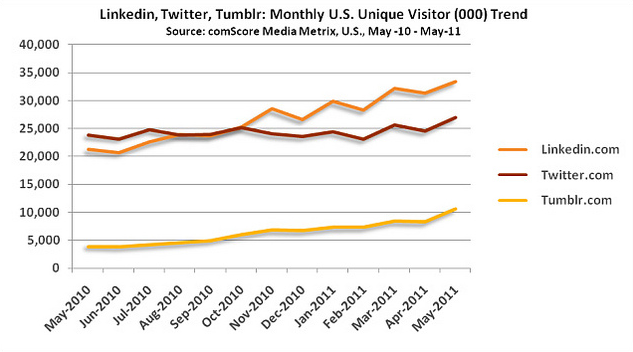 Data from Comscore Nonprofit marketers should evaluate Twitter once again. The network suffered a bad year in 2010 which saw it lose a lot of ground, and become relegated to a second tier network behind Facebook, YouTube and LinkedIn in user visits.
Data from Comscore Nonprofit marketers should evaluate Twitter once again. The network suffered a bad year in 2010 which saw it lose a lot of ground, and become relegated to a second tier network behind Facebook, YouTube and LinkedIn in user visits.
At the same time, the recent announcement by Apple that it was integrating Twitter into its next generation operating system for iPhones and iPads has reinvigorated the microblogging network's prospects. Further, regardless of the relative weak actions that Twitter produces, Google's use of Tweets in its pagerank algorithm makes it an interesting play from an organic search engine optimization standpoint.
Let's be clear. Twitter does work for some nonprofits. What is a nonprofit to do with all of these mixed signals? In my recently released book Welcome to the Fifth Estate, the second half of the book deals with building a strategy and sustaining it over the long term. In chapters five and seven there are some lessons learned on technology choices, and what to do. Here are applicable pointers for those wondering whether to adopt Twitter in their online strategy. It gets back to community. Simply, put if your stakeholders -- donors, volunteers, industry influencers, etc. -- are on Twitter and actively use it, then by all means go for it. But make sure to vet this closely. It is about your community. If you have a good communications program already, this may be worth a survey them to determine preferred forms of social media.
In the chapter on sustainability (seven), it was clear that organizations who experienced long term success -- Wiser Earth, the Humane Society of the United States, LinkedIn, Dell and Care2 -- were very in tune with their communities technology and content needs. This community mindfulness and a parallel attention to organizational mission were the underlying drivers to their long term success. The parallel track of mission should be an underlying driver for all communications, social or not. How will this action help the organization achieve its mission? What are the tangible results we expect to see? If this is not clear then please reevaluate the strategy.
If your audience is mobile, do think about Twitter. Mobility is an increasingly critical factor. Twitter users tend to live in urban areas, with a strong minority representation, middle class income, and with smartphone owners. iPhone integration will likely strengthen this trend. Now let's say you want to have conversations within the nonprofit sector. Like most groups of content publishers, almost the entire nonprofit blogging community is on Twitter publishing their efforts. From Frank Berry at Netwits, NTEN's Amy Sample Ward and my colleague Beth Kanter to author Kivi Leroux Miller, Socialbrite's JD Lasica and Network for Good's Katya Andresen, they are on Twitter. This is a great way to interact with them. However, be careful. Inside baseball popularity may not be relevant to your stakeholders. For example, if your stakeholders are organic rural farmers, then getting featured on John Haydon's blog or Twitter stream -- while certainly noticeable within the sector -- won't really impact your stakeholders.
Participating on Facebook has a much higher likelihood of success. Another reason to not invest in Twitter: Everyone is doing it. Twitter has been very popular within the sector. That doesn't mean everyone is getting results. Again, let your community be the ultimate barometer. What do you think about Twitter?
Geoff Livinginston is the co-founder of the communications agency Zoetica and the author of Welcome to the Fifth Estate.


COMMENTS